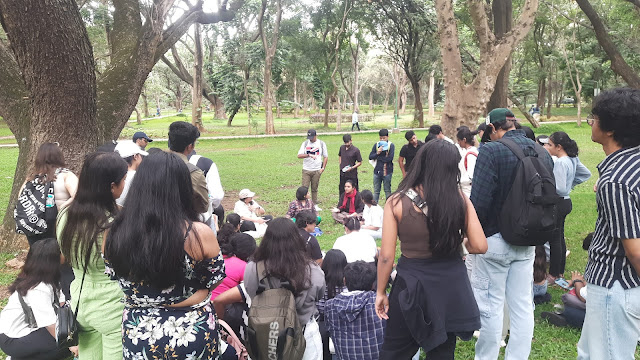Shubha Ramachandran of Biome Environmental Trust was invited as a speaker at the Swachhata Saarthi Samvaad, a live interaction with Swachhata Saarthi fellows on waste management and community participation. Swachhata Saarthi Samvaad is part of a fellowship by the Waste to Wealth Mission of the Office of Principal Scientific Advisor (PSA), Government of India
- Date & Time - 9th February 2024, 5 PM - 6 PM
- Topic of Discussion - Water Responsibility: Opportunities, Approaches
- Participants - Surbhi Awasthi from Invest India (host), Shubha, Uma and Apeksha from Biome Environmental Trust, 25 SSF fellows
About Swachhta Saarthi Fellowship :
The Swachhta Saarthi Fellowship (SSF) is an inspiring behavioral change and community engagement program that aims to sensitize communities towards waste management while offering innovative solutions for converting waste to wealth. This fellowship program recognizes the efforts of young students from schools and colleges, community workers, Self Help Groups (SHGs), and sanitation workers who display unwavering dedication to addressing the pressing challenges of waste management through innovative solutions, product development, and community awareness programs.
The Samvaad:
The session started with a brief introductory video of the work done by Biome Environmental Trust in schools and communities. It highlighted the need for rainwater harvesting systems and community wells for sustainable water management.
The presentation involved various aspects of water management, from individual to community levels. It dealt with various sources of water like rainfall, groundwater, and unconfined shallow aquifers and their effective use in a sustainable and energy-efficient way. A few successful stories of layouts, apartments, schools and parks were discussed.
- Create awareness about the shallow aquifer and the importance of recharging and managing it
- To motivate individuals, communities, institutions, and government to dig, revive and maintain at least 10 lakh (1 million) recharge wells across the city of Bengaluru
- The explicit objective of the intervention is to increase the groundwater table in the city while providing livelihoods to the local community of traditional well-diggers (called Mannu Vaddars) in Karnataka
The speaker also stressed the importance of the lake ecosystem in an urban area and the need for its conservation. The synergy between the stakeholders of the lake, namely the Samaaj (residents, NGOs, academic institutions), Sarkaar (BBMP, BWSSB, CPCB) and Bazaar (STP vendors, fishermen), is the need of the hour to keep the biodiversity and livelihoods of the people alive. Effective use of wastewater, which is possible at different levels of society, was highlighted in the session. Grey water treatment is a way to reuse wastewater at household and apartment levels. At the city level, the treated wastewater is let into the lakes, which further improves the groundwater table. This indirectly helps rejuvenate the shallow aquifers, an energy-efficient water source. The water can be used after monitoring the quality. The Devanahalli project is one such success story that can be replicated in any similar lake that is getting treated wastewater.
The session concluded by stressing collaborative solutions to address local challenges. Urban water systems affect resources and sanitation; regulation is vital for sustainable consumption. Governance, policies and citizen involvement are key to water resource management.
.png)
Pic depicting the changing urban landscape and it's effect on surface run-off
.png)










.png)


































